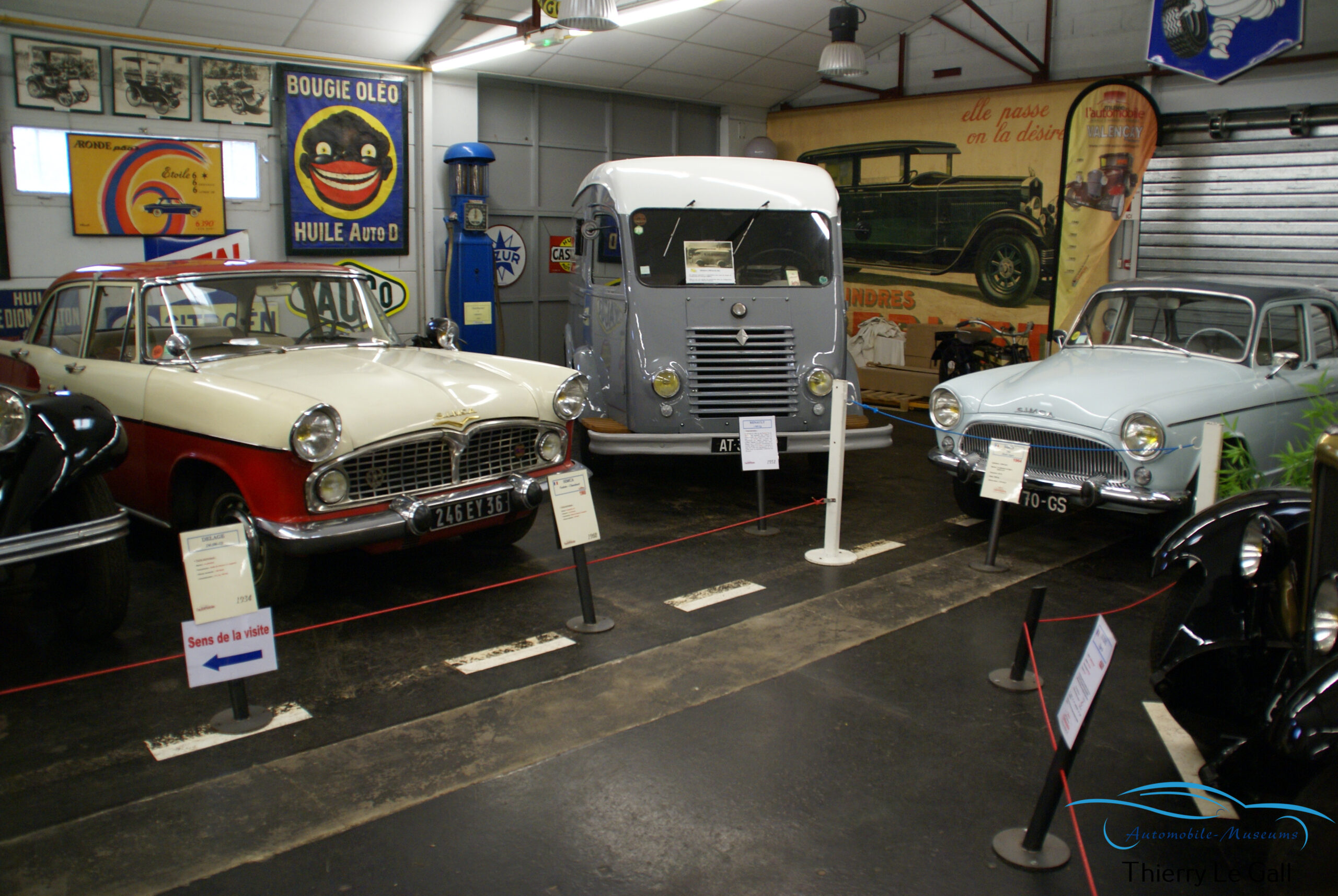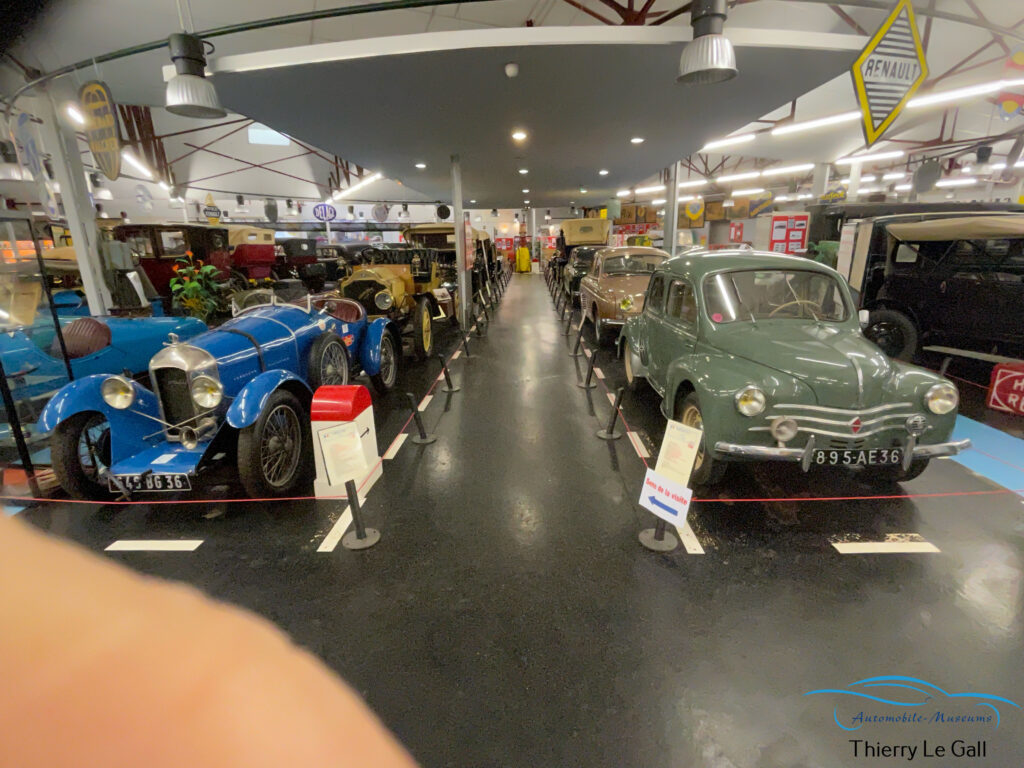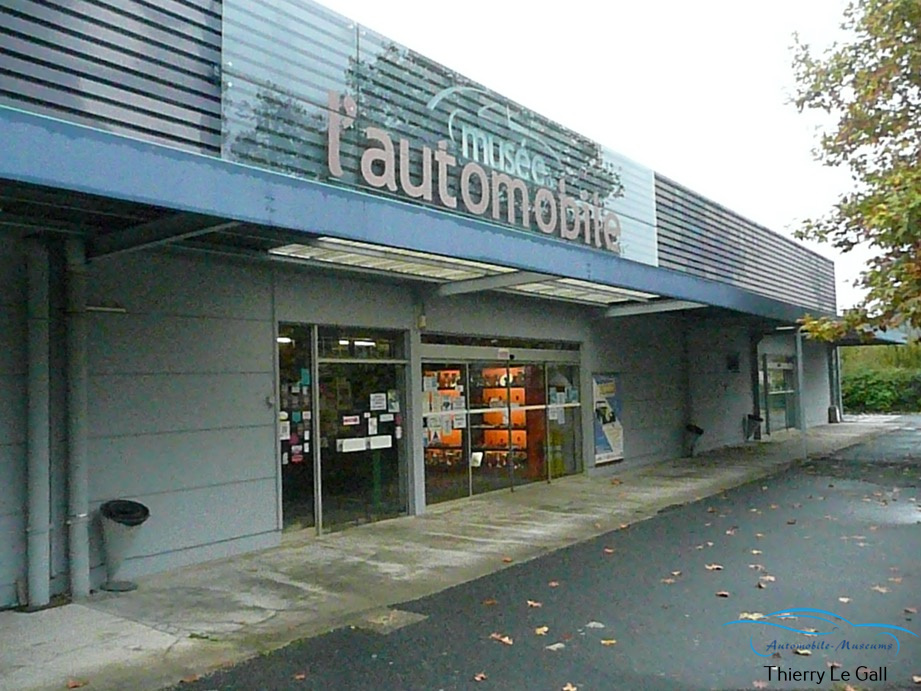


Introduction
When entering the Valençay Automobile Museum, you are prepared to relive the history of the French automotive industry (the vast majority of the cars on display are French), since the cars are classified in a mainly chronological presentation. However, Citroën are entitled to a specific presentation, linked to the history of the collection (see the chapter on history).
The choice was also to position most of the cars in rows, which allows for a fluid and logical circulation, and is often the best solution to see the cars more closely and in detail. For each model, a sheet gives some information, including the type of engine, power, top speed or consumption.
These figures make it possible to measure the progress made over the century in terms of efficiency! Most of the cars are roadworthy, maintained but not restored “in concours condition”, retaining their historic patina. The AMAV association also exhibits some of its members’ cars in a corner of the museum.
This article is divided into 3 historical periods, plus a chapter dedicated to Citroën, and highlights a few cars from each period, in an attempt to be exhaustive. Each year, the Valençay Museum completes its permanent collection with a thematic exhibition that adds a dozen models to the presentation. A specific area is reserved for this exhibition in the museum lobby.
My Favorites
Some of my favourites in the Valençay Automobile Museum collection:
- The Bugatti 57 Stelvio, which remains one of the icons of automobile history
- The 1906 Clement-Bayard AC21, for its remarkable condition and its singular history
- The Citroën SM, the last powerful GT built in France
Museum History
The Valençay Automobile Museum exhibits the collection built up by the Guignard family, a long line of coachbuilders and garage owners based in Vatan, a small village about twenty km from Valençay located on the RN 20. Wheelwrights, blacksmiths, coachbuilders, mechanics, dealerships, the Guignard family followed the development of the automobile. The family also kept most of their cars. Thus, the 1906 Clément-Bayard, bought to serve as a taxi (at the time it was called rental with driver), has always remained in the family and is in the current collection. Camille Guignard Sr. was not a collector, but very conservative and kept several models. His sons Camille and André took over the family business, and became passionate about the old ones kept in the garage and this was the beginning of the collection. After the war, the Guignard garage became a Simca and Ford dealership, then Panhard and Citroën. And here again, the family kept cars, notably of the Citroën brand, which are now on display at the museum. The collection has also grown over the years, with donations or a few purchases when interesting cars come along. First installed in Vatan, in a small building near the family gas station, the collection was then exhibited in the former horse riding arena of the Château de Valençay between the 1980s and 2000s. In 2001, the management was taken over by the Ecueillé Valençay Community of Municipalities. As the outbuilding of the castle was in poor condition, the collection was installed in a new dedicated building of 1500m2, located a few hundred meters from the castle. The AMAV (Association of Friends of the Museum of Valençay) provides support in the animation and development of the museum.

1898-1920
The Valençay Automobile Museum takes us back to the 19th century, with its 1898Panhard & Levassor Type 5. The car offers 2 seats in the open air but provides a practical wicker basket to store an umbrella. The 1906 Clément-Bayard AC21, mentioned earlier in the history, offers much better protection to its occupants. As Vatan’s first taxi, it took the people from Vatan and the surrounding area for daily needs and leisure, including Sunday excursions to visit the Loire castles. With a twin-cylinder engine of 9 horsepower, it drove at 45km/h! It was used until 1930, reaching 300,000 km “on the odometer”. It was meticulously maintained, and underwent several repairs, particularly at the mechanical level. The car then remained in the family garage, until it was restored by André Guignard. Note the battery installed on the running board in a varnished wooden case. It is extremely rare to find a car that has remained in the same family for more than 110 years!






The other Clément-Bayard is a 1912 AC4 mode. The Delaunay-Belleville, recognizable by their round grille, were among the most prestigious cars in the 1900s, like the 1906 HH for example, the car of kings and tsars. The 1910 Delaunay-Belleville K6 came out of retirement in 1967 to set off on an adventure, as it covered 15,000 km in the hands of André Guignard during a raid from the North Cape to Paris via the Caucasus. Several maps and photos illustrate this road adventure.






The 1906 Turcat-Méry was a more powerful and faster “sport” model. it can be seen on a photo next to the Concorde, with André Guignard and André Turcat, the famous French test pilot of the Concorde: indeed, André Turcat, was a descendant of the manufacturer. The Renault VI of 1910 is an imposing limousine, and a historic car since it was used by 2 Presidents of the French Republic, Raymond Poincarré and Alexandre Millerand.






However, production in the 1900s also offered smaller, lighter cars, such as the 1912 Le Zèbre Type C which weighed less than 350 kg. The Bedelia, even lighter at 170kg, fell into the Cyclecars category, and had a rare tandem arrangement for the 2 passengers. One of the few foreign cars in the museum is a 1908 Ford T, the world’s first mass-produced car (more than 16 million units between 1908 and 1927), which revolutionised the use of the car, but also the production and inspired André Citroën.





1921-1939
Another American car sits next to the Ford T, a 1928 Ford A. The Ford A, the successor to the Ford T (don’t look for logic), would be produced in nearly 5 million units, but in only 4 years (1928-1931). We can see with the cars of the 1920s and 1930s how the bodywork evolved away from the motorized horse-drawn style. Production diversified considerably, from tricycles to limousine. Thus, the Darmont Special, a tricycle inspired by the first Morgans and equipped with a V2 engine curiously placed in front of the grille, was a commercial success supported by many sporting successes. The Amilcar CGSS is only slightly heavier, very sporty too, and falls into the category of “voiturettes”.







Among the Renaults on display, the 1923 van is also a family car. Camille Guignard sold the chassis which was then bodied into a tarpaulin van for the first customer, then taken over by Camille Guignard in 1937 for use in the garage, before storing it in 1950, and later on restaured by her son André. Three other Renaults are in the collection, a Torpedo MT 1136 from 1924, a PG2 saloon from 1929 and a Monasix from 1930, a medium saloon equipped with an in-line 6-cylinder engine.





Panhard was an innovative manufacturer, and while the 1926 X47 had a fairly conventional bodywork, the 1936 X73 Panoramic and especially the 1937 X76 Dynamic highlighted their aerodynamic design. Its small windshield, massive grille and grilles on the headlights are emblematic of this imposing sedan. Aerodynamics also with the Peugeot 402 of 1938, typical with its headlights centered behind the radiator grille.






Among the most elite French cars of the 1930s were Bugatti and Delage. The Delage D6-11, bodied here as a statutory interior drive, has a mascot sculpted in the shape of Saint Christopher. The Bugatti 57 Stelvio, in a cabriolet by Gangloff based on a design by Jean Bugatti, is sportier and is certainly one of the jewels of this collection.





Post-War
The Valençay Automobile Museum presents the popular cars that put the French behind the wheel, the car having been truly democratized from the 1950s onwards. Now “Regie Nationale”, Renault was for a long time the holder of the rear engine with its 3 major popular models, the 4CV, the Dauphine and then the R8. Based on the same architecture, the Caravelle was a small convertible that was a commercial success with more than 100,000 sales. Renault offered 2 of them to Princess Grace of Monaco and Brigitte Bardot, two of the female icons of the time.





After the war, some models from the 1930s were revived, possibly slightly modernized, such as the Hotchkiss 864 which became the S49 but kept the style of pre-war productions. More modern, the Renault Frégate was a more statutory grand tourer, and the model presented belonged to the President of the Garage Owners Syndicate. The Panhard Junior was also a small convertible, developed at the instigation of the importer Panhard in the United States, of which nearly 5000 units were built. The Ford Comète is a coupe produced by Ford France, derived from the Vedette, equipped with a V8 and which had the ambition to revive the French luxury automobile in the early 1950s. Its success was limited, especially as Ford withdrew from the French market and sold its Poissy plant to Simca.






Following this acquisition, Simca inherited a large sedan designed by Ford France. Redesigned, it became the Simca Vedette, and ensured the top of the Simca range. The 2nd generation accentuates the American style of its bodywork, with panoramic windshield and spoilers. The Chambord from the collection is the luxury version of the model. The Simca Vedette will be the last mass-produced French car to be equipped with a V8. The Simca Vedette was an old, expensive and fuel-guzzling design and was discontinued in 1961.


The Citroen
As the Guignard garage was a Citroen dealer for many years, the brand with the chevrons holds a special place in the collection. The Citroen are therefore grouped in one area of the exhibition, and not dispersed according to chronology. Indeed, the Citroen collection dates back to the origins of the brand, long before Camille and André Guignard became dealers.
Thus the 1922 B2, here in Torpedo, is the second model mass-produced by Citroen, with 90,000 units sold. The 1924 C3 was a popular small car, and its original shape with the narrow rear earned it the nickname Clover which has gone down in history. The B14F (1927) is another important marker as it was the first European model with an all-steel closed body.




Several iconic Citroen are on display, with a Traction in its 15 six (15 hp, 6 cylinders) version, the most powerful, or a 2 CV of the 1st generation (Type A, 1951), and of course a DS, one of Citroen ‘s most innovative models. The highlight of this Citroen collection, the SM on display is in a 1971carburettor version. Its quite relative commercial success (barely 13,000 units produced) does not prevent it from being a highly sought-after model among collectors today, with a price that is soaring.







Another even rarer model, was the M35, a full-scale experiment in the use of the Wankel rotary engine. This coupé based on the AMI 8, whose primary concern was clearly not elegance, was offered to the brand’s customers who drove a lot, in order to test the reliability of the engine. 267 examples were built between 1969 and 1971, and at the end of the experiment, Citroen decided to repatriate all the models produced to destroy them, so as not to have to continue their maintenance. However, many users or dealers will keep them, which means that we can regularly see in museums or collections the testimony of this unusual experience. All cars were numbered on the front fender. It should be noted that the model on display in Valençay bears the number 396, as Citroen did not follow the numerical order for its initially planned production of 500 units. This experiment led to a special version of the GS called the Birotor, thus equipped with a 2-rotor rotary engine (the M35 was a single-rotor). One of these engines is on display near the M35.



2-Wheelers & Fire trucks
In a corner of the hall, the Museum of Valençay exhibits a small collection of 2-wheelers and fire engines. Among the 2-wheelers, some bicycles, vintage motorcycles, mopeds and Solex. 2 curiosities stand out. The Welbike is a British mini motorcycle designed during the 2nd World War by a military research service and intended for special forces. The craft was small and collapsible, and could therefore be parachuted with the soldiers, providing them with a means of locomotion once they reached the ground. More than 3500 examples were made, but they were ultimately little used.



The other is a one-of-a-kind motorcycle from the 1960s, a handcrafted build combining a BMW-based in-house frame, a BMW gearbox, an 850cc Panhard engine and some parts from other motorcycles. 4 fire trucks from different eras, from the Vierzon and Valençay brigades, recreate a small history of the evolution of the machines used by firefighters.



Decoration
On the walls are many classic objects in the decoration of car museums, such as large advertising posters, enamelled plates, canisters and tools such as a Michelin inflator, and also several radiators, these pieces being often typical of certain manufacturers by their style or shape, before disappearing behind the grilles with the evolution of shapes.





Several mannequins near the cars provide context for the cars and fashion of the time. There are also a few models, including a diorama evoking the famous episode of the Taxis de la Marne, when the general staff of the French army requisitioned Parisian taxis in 1914 to bring reinforcements to the front.


Conclusion
With its sixty or so cars on display, the Valençay Automobile Museum allows you to explore nearly 80 years of French automobiles, popular or prestigious, by making the big jump between Citroën 2 CV or Renault 4 CV and Bugatti 57!
The photos on this page belong to Automobile Museums, no right of reproduction without the express permission of the platform.
Museums are living places, and therefore the content or layout may have changed between the publication of this article and your visit. The layout may be different, cars may be absent (overhaul, maintenance, loan…) and new ones may have been joined the exhibition.
